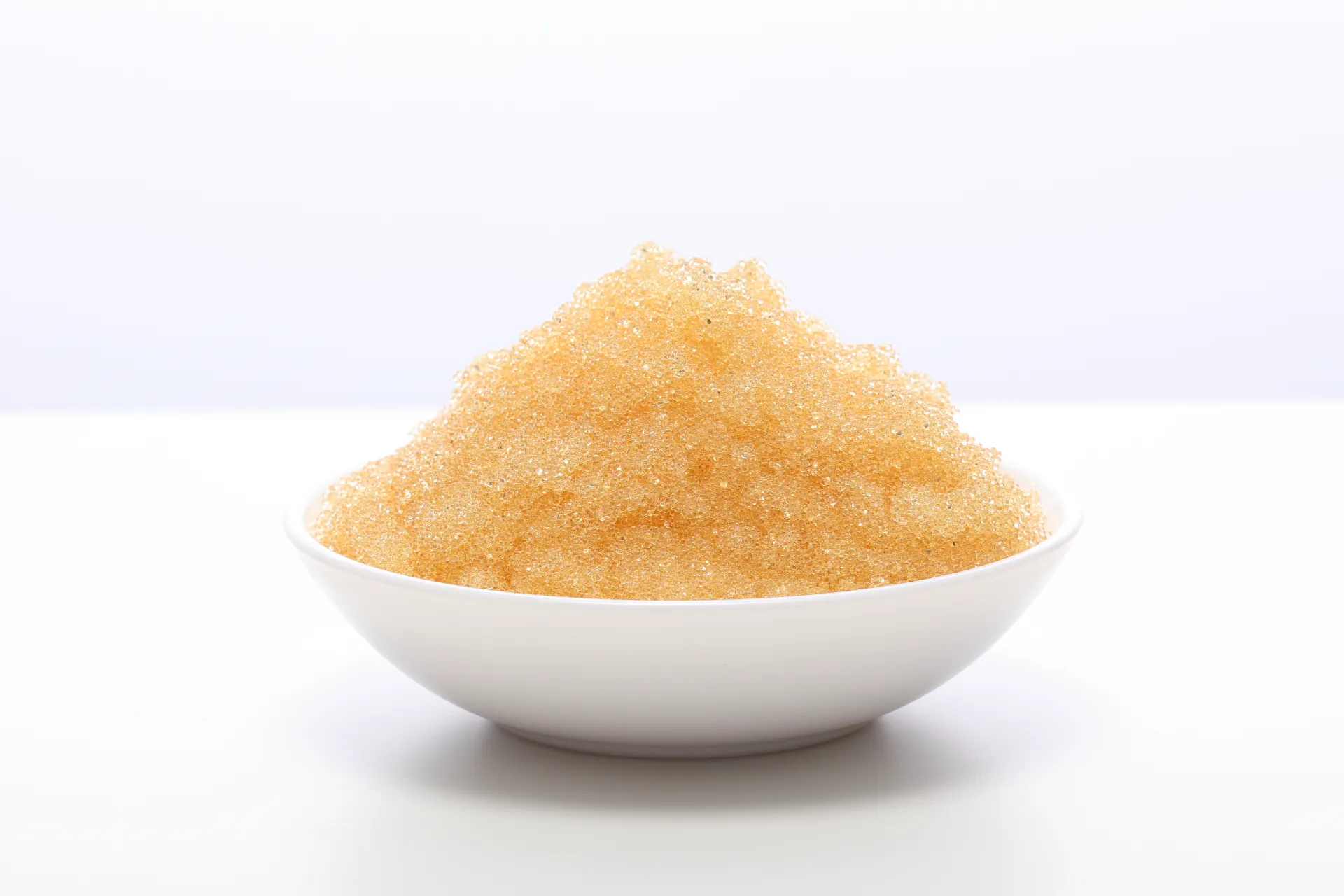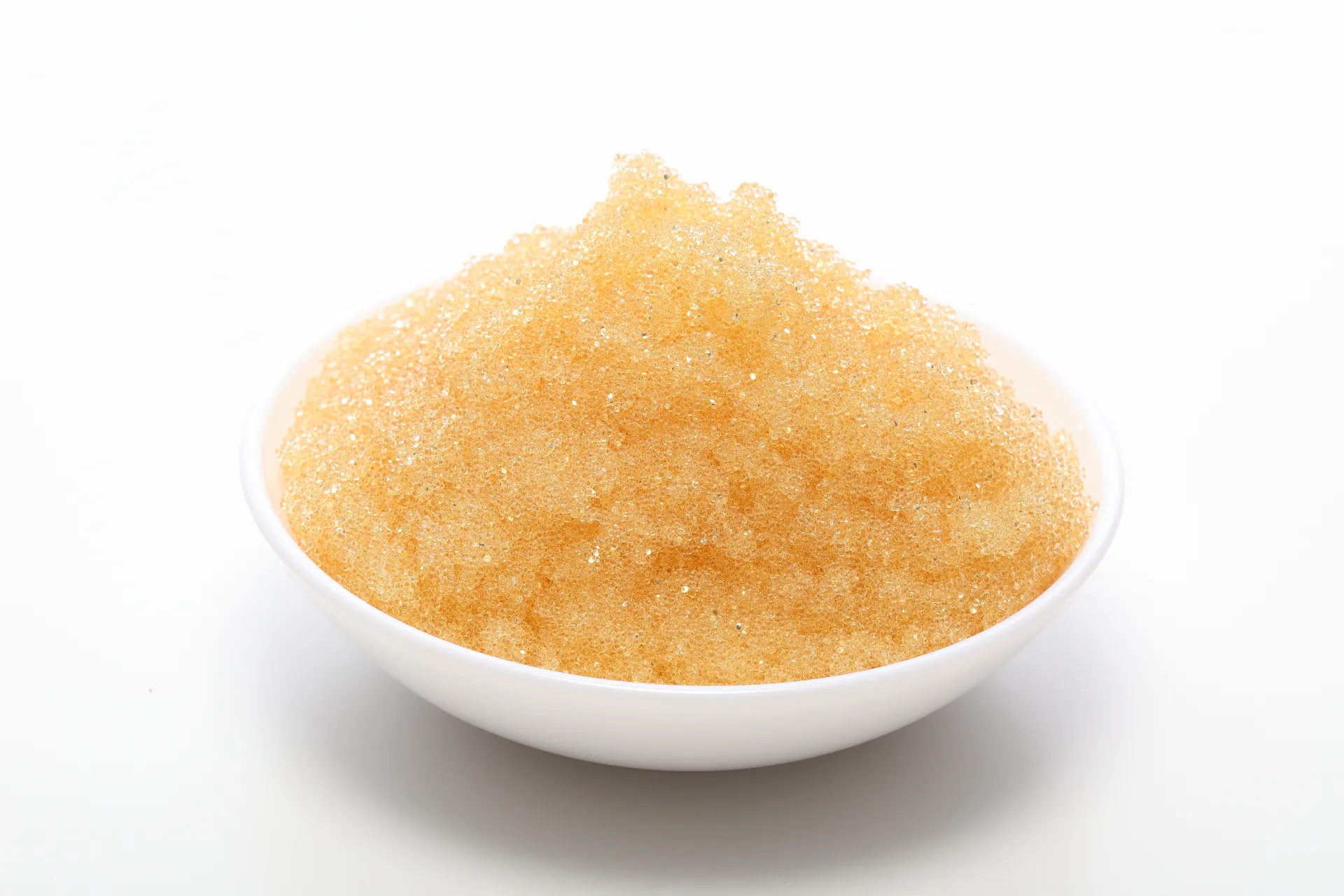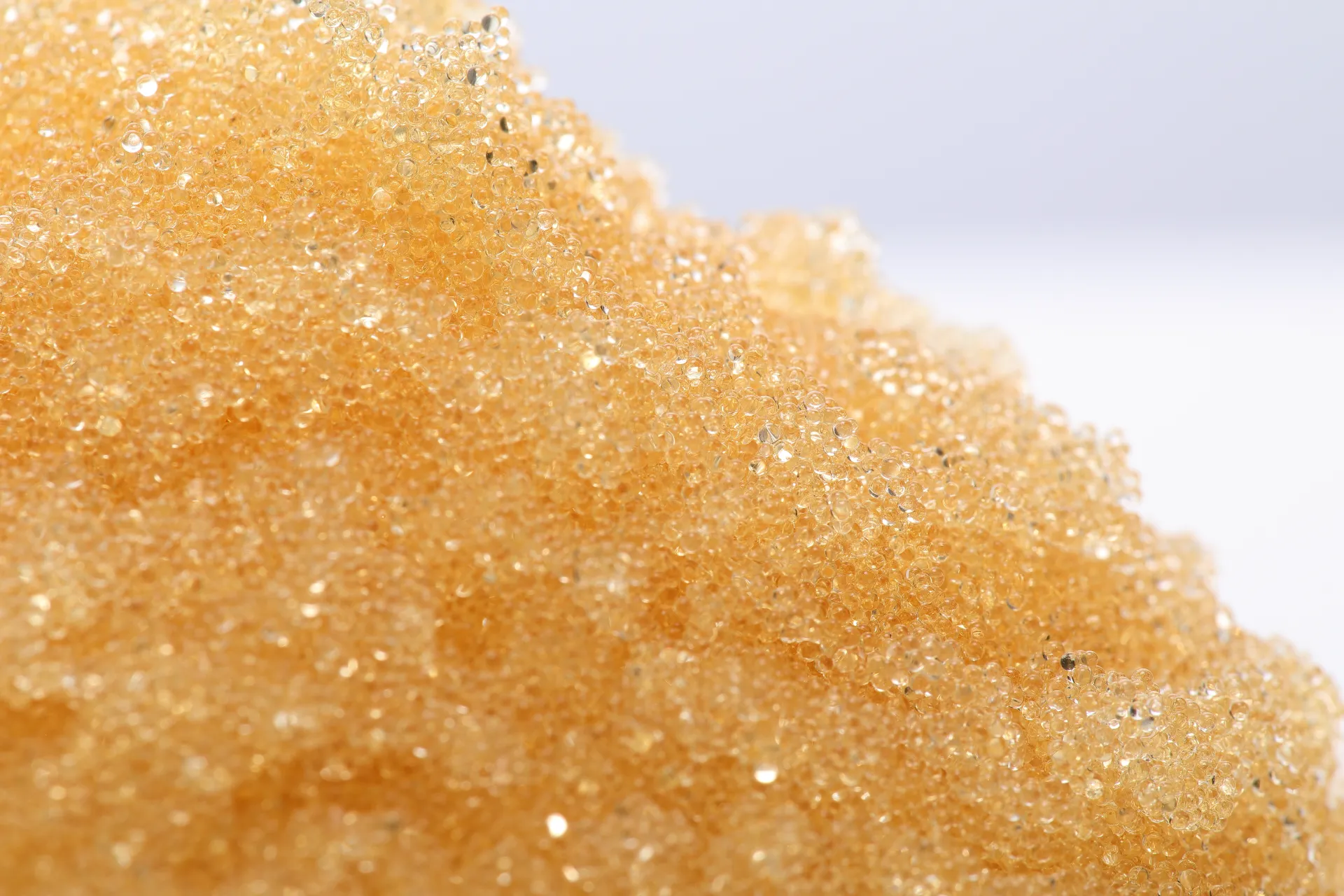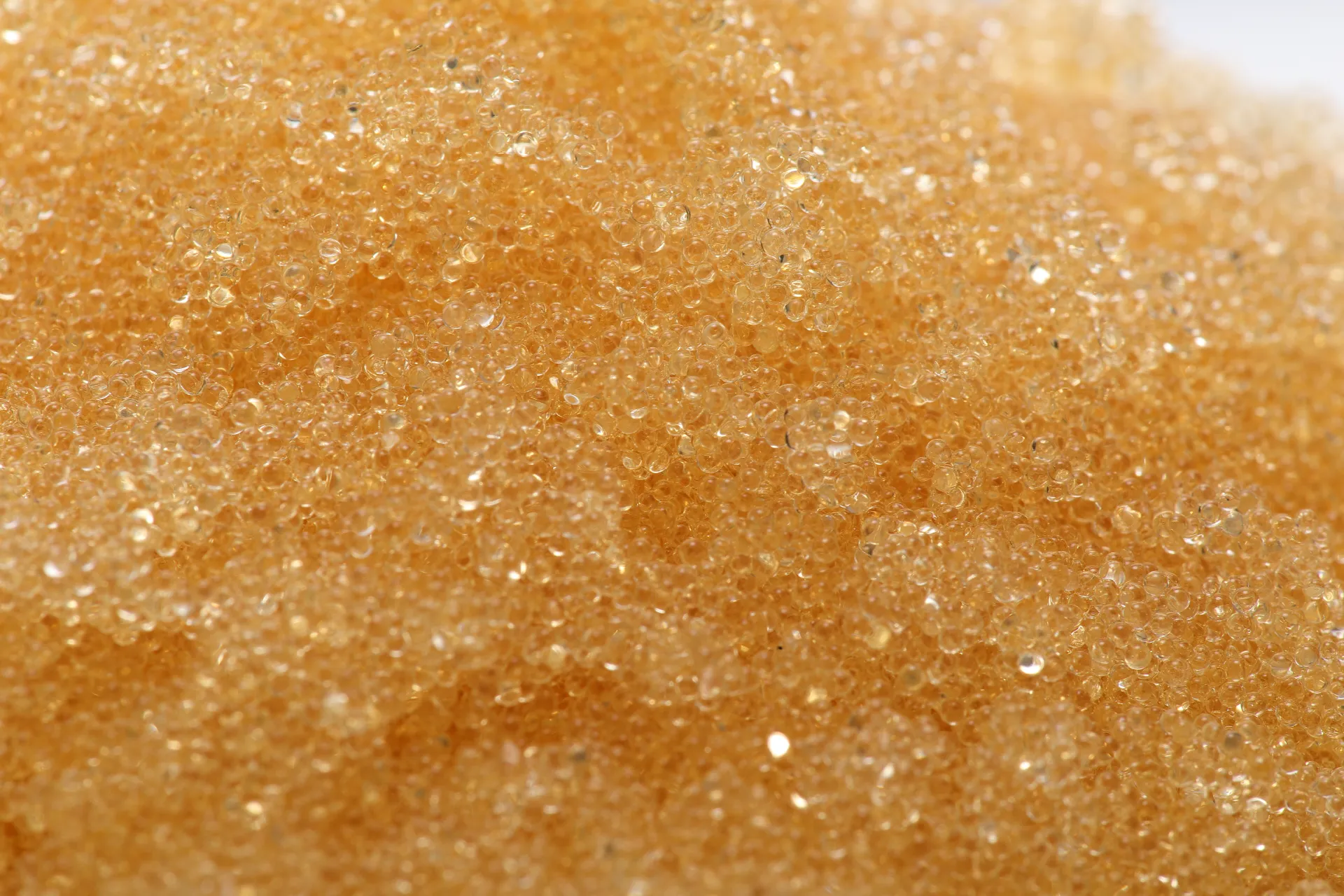The Core of Advanced Purification: Understanding Ion Exchange Resins
In industrial and commercial applications, the demand for highly purified water and selective contaminant removal is paramount. At the heart of many such processes lies the ion exchange resin. These sophisticated polymeric materials are engineered to facilitate the reversible interchange of ions between an insoluble solid phase (the resin beads) and a liquid phase (the solution being treated). This fundamental principle enables their widespread use in critical processes ranging from water demineralization and softening to the recovery of precious metals and the purification of pharmaceuticals. Their unique chemical structure and exceptional performance characteristics make them indispensable components in achieving stringent quality and environmental standards across diverse sectors.
Understanding the intricate mechanics and application versatility of these resins is crucial for industries aiming to optimize their resource management and product quality. This comprehensive guide delves into the manufacturing, technical advantages, and strategic deployment of these essential materials.
Manufacturing Process of Ion Exchange Resins: From Monomer to Functional Bead
The production of high-performance ion exchange resin involves a meticulous multi-stage chemical engineering process, ensuring the creation of beads with precise physical and chemical properties. The journey begins with basic organic monomers and culminates in a highly functional polymeric material.
- Raw Material Preparation: The primary raw materials are typically styrene and divinylbenzene (DVB). Styrene forms the main backbone, while DVB acts as a cross-linking agent, providing the necessary mechanical strength and insolubility to the final resin bead. The proportion of DVB dictates the degree of cross-linking, influencing the resin’s swelling characteristics, osmotic stability, and selectivity.
- Polymerization: The blend of styrene and DVB is dispersed in an aqueous medium to form tiny droplets. Through suspension polymerization, these droplets are converted into spherical, insoluble polymer beads. Precise control over temperature, agitation, and dispersant concentration is vital to achieve uniform bead size and porosity, which are critical for efficient ion exchange kinetics.
- Functionalization (Activation): This is the stage where the inert polymer beads are endowed with ion-exchange capabilities. For strong acid cation resins, this typically involves sulfonation, where sulfonic acid groups (-SO₃H) are introduced onto the aromatic rings of the polymer matrix. For strong base anion resins, chloromethylation followed by amination introduces quaternary ammonium groups. The choice of functional group determines the resin’s selectivity and strength.
- Washing and Purification: Following functionalization, the resin beads undergo extensive washing cycles to remove unreacted reagents, by-products, and residual impurities. This step is crucial to ensure the purity of the final product and prevent leaching of contaminants into treated water.
- Sieving and Grading: The purified resin beads are then carefully sieved into specific particle size ranges. This grading is essential for optimal flow characteristics, pressure drop control, and consistent performance in industrial columns. Quality control involves strict adherence to particle size distribution standards, often measured using laser diffraction or microscopy.
- Quality Control and Testing: Throughout the entire process, rigorous testing standards, including ISO 9001 and specific ASTM/ANSI methods, are applied. Parameters like total exchange capacity, moisture retention, particle size distribution, uniformity coefficient, and osmotic stability are routinely checked. These tests ensure that the resin meets stringent performance specifications and will deliver the expected service life and efficiency in target industries such as petrochemical, metallurgy, power generation, and water supply & drainage.
This meticulous manufacturing ensures that the resulting ion exchange resins are robust, highly efficient, and reliable for their intended applications, offering advantages like energy saving through efficient regeneration cycles and superior corrosion resistance in system components due to effective ion removal.

Figure 1: Illustration of ion exchange resin bead structure.
Industry Trends and Market Dynamics for Ion Exchange Resins
The global market for ion exchange resin is experiencing robust growth, driven by escalating demand for water treatment, environmental regulations, and advancements in industrial processing. According to recent market analysis, the global ion exchange resin market size was valued at approximately USD 1.8 billion in 2022 and is projected to reach USD 2.6 billion by 2030, exhibiting a CAGR of around 4.5% during the forecast period. This growth is primarily fueled by:
- Increasing Water Scarcity and Quality Concerns: Growing populations and industrialization are stressing freshwater resources, making efficient water recycling and purification technologies, reliant on ion exchange, indispensable.
- Stricter Environmental Regulations: Governments worldwide are imposing more stringent discharge limits for industrial effluents, driving the adoption of advanced treatment methods like selective ion removal.
- Growth in End-Use Industries: Expanding sectors such as power generation (boiler feedwater treatment), chemicals & pharmaceuticals (purification), and food & beverage (sugar decolorization, demineralization) are continuously increasing their consumption of ion exchange materials.
- Technological Advancements: Development of new resin types, including specialty and selective resins, alongside innovations in regeneration and optimization techniques, enhance efficiency and broaden application scopes.
The market is also seeing a shift towards more sustainable and eco-friendly resin solutions, with a focus on resins that offer higher regeneration efficiency and longer service life, thereby reducing chemical waste and operational costs.
Technical Specifications: Strong Acid Cation Exchange Resin 001×10 FG
For demanding applications requiring high capacity and robust performance, products like the Strong Acid Cation Exchange Resin 001×10 FG are engineered to excel. This resin, a premium gel-type strong acid cation exchange resin, is specifically designed for industrial water treatment processes where high purity and efficient removal of hardness ions (calcium, magnesium) and other cations are critical. Its 10% DVB cross-linking provides superior chemical and physical stability, making it resilient in challenging operating conditions.
Key Specifications for Strong Acid Cation Exchange Resin 001×10 FG
| Parameter | Specification for 001×10 FG |
|---|---|
| Polymer Matrix | Styrene-Divinylbenzene Copolymer, Gel Type |
| Functional Group | Sulfonic Acid |
| Ionic Form as Shipped | Sodium (Na+) |
| Total Exchange Capacity (min) | 2.0 eq/L (Na+ form) |
| Moisture Retention | 45-50% |
| Particle Size Range | 0.315 – 1.25 mm (≥95%) |
| Uniformity Coefficient (max) | 1.6 |
| Effective Size (min) | 0.45 mm |
| Reversible Swelling (Na+ to H+) | Max 8% |
| Operating pH Range | 0 – 14 |
| Maximum Operating Temperature | 120°C (250°F) |
| Specific Gravity | 1.26 – 1.30 g/mL |
| Shipping Weight (approx.) | 800 – 850 g/L |
These detailed specifications ensure that the resin performs optimally in its intended environment, providing predictable and reliable results for critical industrial processes. The high cross-linking of the 001×10 FG resin is particularly beneficial in applications requiring resistance to oxidation and chemical degradation, extending its useful service life significantly compared to resins with lower DVB content.

Figure 2: Close-up view of ion exchange resin beads.
Application Scenarios for Ion Exchange Resins
The versatility of ion exchange resin allows for its deployment across a broad spectrum of industries, solving complex purification and separation challenges.
- Water Softening: Perhaps the most common application, cation resins remove hardness ions (Ca²⁺, Mg²⁺) by exchanging them for sodium ions, preventing scale formation in boilers, cooling towers, and domestic systems.
- Demineralization (Deionization): Using a combination of strong acid cation and strong base anion resins, all dissolved ionic impurities can be removed from water, producing ultra-pure water essential for power generation (boiler feedwater), semiconductor manufacturing, and pharmaceutical production.
- Condensate Polishing: In power plants, condensate polishing units utilize mixed-bed resins to remove trace impurities from condensed steam, protecting high-pressure boilers from corrosion and scaling.
- Chemical Processing: Resins are used for acid retardation, catalyst applications, separation of rare earths, and purification of chemical streams, including the removal of specific metal ions or organic contaminants.
- Pharmaceutical and Biotechnology: Crucial for the purification of active pharmaceutical ingredients (APIs), decolorization of solutions, and chromatography applications for separating biomolecules.
- Food and Beverage: Applications include sugar decolorization (removal of colored organic compounds), de-ashing of juices, and purification of gelatin and alcoholic beverages.
- Metallurgy and Metal Finishing: Recovery of valuable metals from plating baths and wastewater streams, and purification of etching solutions.
Each application leverages the specific exchange properties and selectivity of different resin types, demonstrating the broad utility of ion exchange technology in maintaining process integrity and product quality.

Figure 3: Ion exchange resin columns in an industrial water treatment plant.
Technical Advantages and Performance Benefits
The implementation of high-quality ion exchange resins are paramount for achieving significant operational advantages and cost efficiencies. Key benefits include:
- High Efficiency and Selectivity: Modern resins are designed for superior capacity and kinetic performance, ensuring rapid and thorough removal of target ions. Selective resins can target specific contaminants even in complex matrices.
- Cost-Effective Regeneration: Resins can be regenerated multiple times using relatively inexpensive chemical solutions (e.g., brine, acid, caustic), allowing for extended service life and reducing overall operating costs. This contributes to energy saving by maintaining optimal system performance.
- Corrosion Resistance: By effectively removing corrosive ions (like chlorides and sulfates) from process water, ion exchange technology significantly prolongs the lifespan of industrial equipment such as boilers, pipelines, and heat exchangers, thereby minimizing maintenance and replacement costs.
- Environmental Compliance: Resins enable industries to meet stringent discharge regulations by removing toxic metals and other pollutants, supporting sustainable water management practices.
- Process Optimization: The ability to control water quality precisely translates to improved product consistency, reduced downtime, and enhanced overall process reliability in manufacturing.
Vendor Comparison and Selection Criteria to Buy Ion Exchange Resin
When you need to buy ion exchange resin, choosing the right vendor and product is crucial for long-term operational success. The market offers a variety of manufacturers, each with distinct offerings. A critical evaluation considers not just price, but also performance, support, and reliability.
Comparison of Key Ion Exchange Resin Types
| Feature/Resin Type | Strong Acid Cation (SAC) | Weak Acid Cation (WAC) | Strong Base Anion (SBA) | Weak Base Anion (WBA) |
|---|---|---|---|---|
| Primary Application | Water Softening, Demineralization, Condensate Polishing | Alkalinity Removal, Temporary Hardness Removal, Metals Recovery | Demineralization, Silica & CO2 Removal, Organic Removal | Acid Removal, Organic Scavenging, Dealkalization |
| Regenerant Efficiency | Moderate (High chemical usage) | High (Low chemical usage) | Moderate (High chemical usage) | High (Low chemical usage) |
| pH Operating Range | 0-14 (entire pH range) | 6-14 (effective above pH 5-6) | 0-14 (entire pH range) | 0-7 (effective below pH 7) |
| Resistance to Fouling | Good | Excellent (high resistance) | Moderate (prone to organic fouling) | Good (especially macroporous types) |
| Cost Effectiveness | High initial cost, moderate operating cost | Moderate initial cost, low operating cost | High initial cost, moderate operating cost | Moderate initial cost, low operating cost |
Beyond these technical comparisons, when assessing vendors, consider:
- Reputation and Experience: Look for vendors with a proven track record, extensive industry experience (e.g., 20+ years), and strong client testimonials.
- Certifications: Verify that products meet international standards (ISO 9001, NSF/ANSI 61 for potable water applications, FDA compliance for food-grade resins).
- Technical Support: Access to expert technical guidance for resin selection, system design, troubleshooting, and optimization is invaluable.
- Product Range and Customization: A broad portfolio indicates capability to meet diverse needs, and the option for customized solutions ensures precise fit for unique challenges.
- Supply Chain Reliability: Timely delivery and consistent product quality are critical for uninterrupted operations.

Figure 4: A diverse range of ion exchange resin products.
Customized Solutions and Tailored Performance
While standard ion exchange resin products address a wide range of applications, many industrial processes have unique requirements that necessitate customized solutions. Leading manufacturers offer specialized services to tailor resin properties for optimal performance in specific, challenging environments. This customization can involve:
- Particle Size Optimization: Adjusting the bead size distribution to minimize pressure drop in packed beds or to enhance kinetics for rapid exchange processes.
- Specific Functional Group Modifiers: Incorporating unique functional groups to achieve ultra-high selectivity for trace contaminants, such as heavy metals (e.g., arsenic, lead) or specific organic molecules.
- Enhanced Mechanical & Osmotic Stability: Developing resins with higher cross-linking or specific macroporous structures for applications involving high flow rates, extreme temperatures, or aggressive chemical environments.
- Food-Grade and Pharmaceutical-Grade Resins: Manufacturing resins under strict purity controls to meet stringent regulatory requirements (e.g., FDA, pharmacopoeia standards) for applications in food processing and API purification.
- Pre-Treated Resins: Supplying resins in a specific ionic form (e.g., H+ or Na+ for cation, OH- or Cl- for anion) to reduce start-up time and commissioning costs for end-users.
Engaging with a vendor capable of providing these bespoke solutions ensures that the resin perfectly integrates with your process, leading to superior efficiency, reduced operational costs, and extended resin lifespan.
Application Case Studies & Customer Success
Real-world deployments demonstrate the tangible benefits of well-chosen ion exchange resins. Here are examples of how these materials drive success across industries:
- Case Study 1: Ultra-Pure Water for Semiconductor Manufacturing:
A leading semiconductor fabrication plant struggled with inconsistent water quality, impacting yield. Implementing a multi-stage deionization system utilizing high-purity Strong Acid Cation (001×10 FG equivalent) and Strong Base Anion resins, followed by mixed-bed polishers, resulted in a sustained resistivity of 18.2 MΩ·cm. This significantly reduced defects attributed to water impurities, leading to a 5% increase in production yield and a 15% reduction in overall water-related operational costs.
- Case Study 2: Boiler Feedwater Treatment in a Power Plant:
A thermal power generation facility faced severe scaling and corrosion in its high-pressure boilers due to inadequate feedwater treatment. By upgrading to a robust demineralization system incorporating specialized strong acid cation and strong base anion resins optimized for high-temperature condensate polishing, the plant achieved consistent low-conductivity boiler feedwater (<0.1 µS/cm). This extended boiler component lifespan by 3 years, reduced chemical cleaning frequency by 40%, and contributed to an estimated annual saving of $250,000 in maintenance and energy costs.
- Case Study 3: Pharmaceutical API Purification:
A pharmaceutical company needed to remove trace impurities and undesirable colored compounds from an Active Pharmaceutical Ingredient (API) solution while maintaining high product yield. A macroporous strong base anion resin, specifically designed for organic scavenging, was integrated into their purification train. This resulted in a product purity increase from 98.5% to 99.8% and achieved the desired color specification, directly enhancing product quality and regulatory compliance.
These instances underscore the critical role of carefully selected and expertly applied ion exchange technology in delivering measurable improvements in efficiency, cost reduction, and product quality.
Ensuring Trust and Reliability: Our Commitment ( Focus)
Our dedication to quality and customer satisfaction is built upon a foundation of expertise, authoritativeness, and trustworthiness. With over two decades of specialized experience in ion exchange technology, we are recognized as a reliable partner in critical industrial applications.
- Certifications & Compliance: Our manufacturing facilities adhere to stringent international quality management systems, holding ISO 9001:2015 and ISO 14001:2015 certifications. Many of our food-grade and potable water resins are NSF/ANSI 61 certified and comply with FDA regulations (CFR Title 21), ensuring safety and suitability for sensitive applications.
- Authoritative Partnerships: We proudly serve a diverse portfolio of clients, including major players in the petrochemical, power generation, and pharmaceutical sectors, who rely on our consistent product quality and technical support. Our long-standing relationships with industry leaders underscore our reputation.
- Rigorous Testing: Every batch of ion exchange resin undergoes comprehensive testing according to established ASTM standards to verify its physical and chemical properties, ensuring performance consistency and reliability. Data sheets with detailed specifications and batch-specific analysis are provided with each shipment.
Frequently Asked Questions (FAQ)
- Q: What is the typical service life of an ion exchange resin?
- A: The service life of an ion exchange resin can vary significantly, typically ranging from 3 to 10 years, depending on the application, water quality, operating conditions (temperature, pH, oxidants), and regeneration practices. Proper pre-treatment and careful operation can extend resin life.
- Q: How do I choose the correct resin for my application?
- A: Selecting the right resin depends on several factors: the target contaminants, desired water quality, flow rate, temperature, and regeneration chemicals available. Our technical support team can assist in performing a detailed water analysis and process evaluation to recommend the optimal resin type and system design.
- Q: Can ion exchange resins remove organic contaminants?
- A: Yes, certain types of macroporous anion exchange resins, particularly strong base anion resins, are specifically designed to effectively remove natural organic matter (NOM) and synthetic organic compounds that can cause fouling or impart color/odor. Activated carbon is also often used in conjunction with ion exchange for comprehensive organic removal.
- Q: What are the environmental considerations for used resins?
- A: Spent resins, especially those used in industrial applications, may contain absorbed contaminants and should be disposed of in accordance with local environmental regulations. Some resins can be regenerated for reuse by specialized services, while others may require landfill or incineration. We provide guidance on responsible disposal practices.
Logistics, Warranty, and After-Sales Support
Our commitment extends beyond product delivery to ensuring continuous operational excellence for our clients.
- Lead Time & Fulfillment: We maintain efficient production and inventory management to offer competitive lead times, typically 2-4 weeks for standard orders, with expedited options available for urgent requirements. Our global logistics network ensures timely and secure delivery.
- Warranty Commitments: All our resins are backed by a comprehensive 1-year warranty against manufacturing defects and material failures under normal operating conditions, ensuring peace of mind for our customers.
- Customer Support: Our dedicated team of technical experts and customer service representatives is available through multiple channels (phone, email, online portal) to provide prompt support, from initial consultation and system design to operational troubleshooting and post-sales assistance. We also offer on-site technical services and training programs to optimize your ion exchange processes.
Conclusion and Future Outlook
As industries continue to face evolving challenges in water quality, resource management, and environmental compliance, the role of advanced ion exchange resin technologies will only grow in importance. Continuous innovation in resin chemistry, coupled with refined manufacturing processes, promises even more selective, efficient, and sustainable solutions. Partnering with experienced manufacturers who prioritize quality, technical expertise, and customer-centric support is vital for capitalizing on these advancements and ensuring long-term operational success. The future of industrial purification and separation is intricately linked with the ongoing development and intelligent application of ion exchange materials.
References
- Smith, J. (2019). Ion Exchange Technology: Theory, Materials, and Applications. Journal of Water Purification.
- Brown, L. (2021). Advances in Polymeric Resins for Industrial Water Treatment. Environmental Science & Technology.
- Market Research Report. (2023). Global Ion Exchange Resin Market: Growth, Trends, and Forecasts.
- International Organization for Standardization. (2020). ISO 9001:2015 Quality management systems — Requirements.
- U.S. Food and Drug Administration. (2022). CFR Title 21 – Food and Drugs.
Hebei Lijiang Biotechnology Co., Ltd, is a new material manufacturer specializing in the production of high-performance special ion exchange resins.mixed bed resin suppliers It is a modern high-tech enterprise that integrates the research and development,production, sales, and service of resin materials and resin terminal products.ion exchange resin The company is committed to producing high-quality industrial grade, food grade,pharmaceutical grade, and nuclear grade resins.cation exchange resin It has passed ISO9001 management certification,SGS certification, and WQA international certification from the American Water Quality Association, and has obtained a national food hygiene license. Food grade resin products comply with FDA standards in the United States.super blog